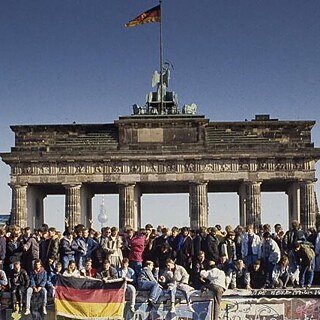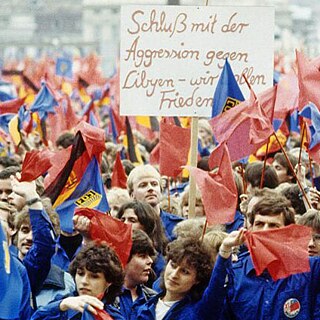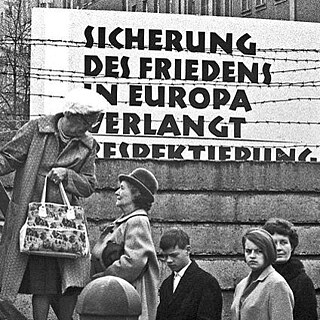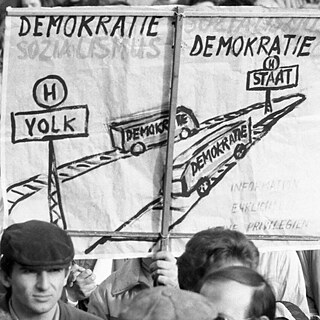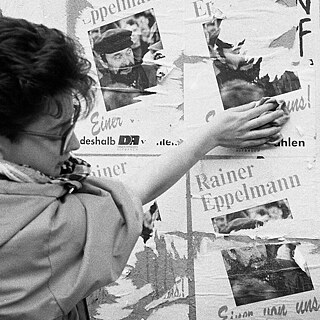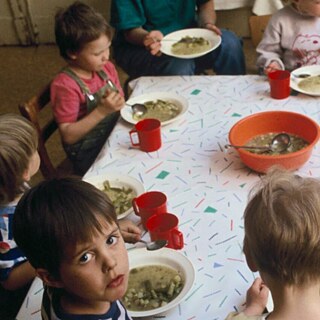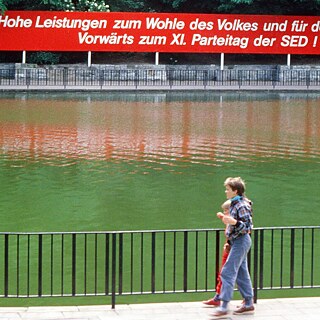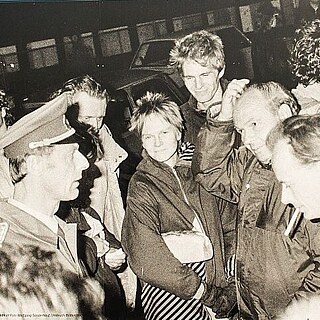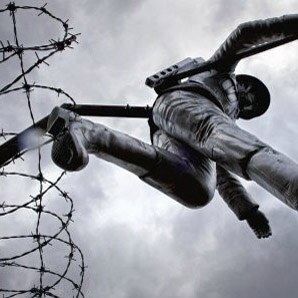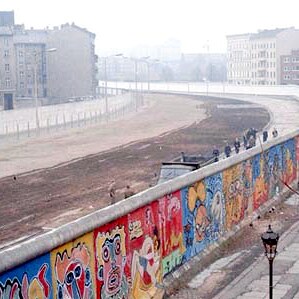
Show description in:
Chapter 9Commonalities and differences FRG vs GDR: Economy

East Germany was a Socialist planned economy; West Germany a Capitalist market economy.
Characteristics
Language level
Target group
Skill

Part of the series Divided Germany, the wall and reunification
26 materials
Description
East Germany was a Socialist planned economy; West Germany a Capitalist market economy. Sounds unquestionable, right? But are planned economies and market economies opposites? What happens to an economy when the constant flow of goods, capital and people is tightly controlled, as it was in East Germany? And despite being notoriously known for having a tight grip on its borders and restriction of movement, East Germany engaged in Socialist Globalization. What was Socialist Globalization and how did it compare to the global flows of Capitalist West Germany?
These videos give some answers.
1. WHERE THERE IS A WILL, THERE IS A WAY
“Contraband” in the GDR: How did East German teens go about getting the jeans jacket or the latest AC/DC tape they wanted, but couldn't get in the GDR? And what do pizza boxes and album covers have in common?
2. DESIRE, NEED AND “VITAMIN B”
Does Capitalism sell you things you don't need? How to make 1000 jars of jam? Follow Jonathan Zatlin, PhD, in this fascinating discussion about East Germany's shortage economy.
3. PLANNED ECONOMY VS. FREE MARKETS: ARE THEY OPPOSITES?
The short answer: No, they're not. They're both interrelated and have much more in common than you think.
4. “IN IT FOR THE MONEY”
Americans use the expression “In it for the money” negatively. How did East Germans think of money in their planned economy? How about in West Germany?
5. WHAT WAS SOCIALIST GLOBALIZATION?
East Germany was notoriously known for closed borders and restriction of movement, but it also participated in Socialist Globalization. Quinn Slobodian, PhD, professor of history at Wellesley College discusses the deep interconnections of East Germany with many parts of the world outside of Europe. A global Cold War network that included vast exchanges of goods, people and expertise.
6. EAST GERMANY IN THE SOCIALIST GLOBALIZATION
How did East Germany (GDR) fit into Socialist Globalization?
7. GLOBALIZATION: SOCIALIST VS. CAPITALIST
Capitalist Globalization? Socialist Globalization? What's the difference?
8. THEY LIED TO US
The planned economy mobilized resources around heavy industrialization, but as Herr Stiller’s experience with a gas pipeline construction project in the Soviet Union in the late 1980s shows, planning could not always live up to its promises. Follow Herr Stiller as he looks back and comments at the footage he took decades ago.
Interesting Link
Khan Academy: „Structuring the State: Command and Market Economies“
PARTNER
Bundesstiftung Aufarbeitung der SED-Diktatur (Federal Foundation for the Reappraisal of the SED Dictatorship), German Consulate General New York, German American Partnership Program (GAPP), American Association of Teachers of German (AATG), Transatlantic Outreach Program (TOP) and Spark for German.
These videos give some answers.
1. WHERE THERE IS A WILL, THERE IS A WAY
“Contraband” in the GDR: How did East German teens go about getting the jeans jacket or the latest AC/DC tape they wanted, but couldn't get in the GDR? And what do pizza boxes and album covers have in common?
2. DESIRE, NEED AND “VITAMIN B”
Does Capitalism sell you things you don't need? How to make 1000 jars of jam? Follow Jonathan Zatlin, PhD, in this fascinating discussion about East Germany's shortage economy.
3. PLANNED ECONOMY VS. FREE MARKETS: ARE THEY OPPOSITES?
The short answer: No, they're not. They're both interrelated and have much more in common than you think.
4. “IN IT FOR THE MONEY”
Americans use the expression “In it for the money” negatively. How did East Germans think of money in their planned economy? How about in West Germany?
5. WHAT WAS SOCIALIST GLOBALIZATION?
East Germany was notoriously known for closed borders and restriction of movement, but it also participated in Socialist Globalization. Quinn Slobodian, PhD, professor of history at Wellesley College discusses the deep interconnections of East Germany with many parts of the world outside of Europe. A global Cold War network that included vast exchanges of goods, people and expertise.
6. EAST GERMANY IN THE SOCIALIST GLOBALIZATION
How did East Germany (GDR) fit into Socialist Globalization?
7. GLOBALIZATION: SOCIALIST VS. CAPITALIST
Capitalist Globalization? Socialist Globalization? What's the difference?
8. THEY LIED TO US
The planned economy mobilized resources around heavy industrialization, but as Herr Stiller’s experience with a gas pipeline construction project in the Soviet Union in the late 1980s shows, planning could not always live up to its promises. Follow Herr Stiller as he looks back and comments at the footage he took decades ago.
Interesting Link
Khan Academy: „Structuring the State: Command and Market Economies“
PARTNER
Bundesstiftung Aufarbeitung der SED-Diktatur (Federal Foundation for the Reappraisal of the SED Dictatorship), German Consulate General New York, German American Partnership Program (GAPP), American Association of Teachers of German (AATG), Transatlantic Outreach Program (TOP) and Spark for German.
Teil von:

© Pixabay
A2 B1
